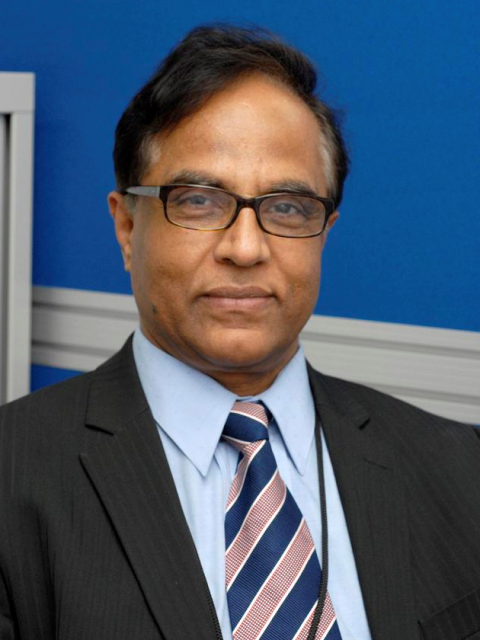 |
Srikantaiah Manjunatha, MBBS, MD, MRCP(UK)
Gastroenterologist
Gastroenterology Unit
Southern District Health Board
Dunedin, New Zealand
|
| |
|
 |
Michael Schultz, MD, PhD
Associate Professor
Department of Medicine
University of Otago
Dunedin, New Zealand
|
Obesity is a global problem of epidemic proportions. There were more than 1.9 billion overweight adults (BMI>25) in 2014 and 600 million of these were obese (BMI>30). Overall, 13% of the world’s adult population (11% males and 15% females) were obese and the prevalence of obesity has doubled between 1980-2014. In 2013, 42 million children under the age of 5 were overweight or obese 1. Obesity is a well-known risk factor for many pathological conditions, including hypertension, hyperlipidemia, diabetes mellitus, coronary artery disease, stroke, osteoarthritis, sleep apnea, and certain cancers, contributing substantially to health care costs. Clinicians are limited by ineffective treatment options as dietary and behavioral modifications, exercise, and pharmacotherapy all have relatively poor long term results 2. Bariatric surgery, though drastic, seems currently to be the only effective way of achieving long term persistent weight loss with improved or resolved comorbid conditions. According to recent recommendations, patients with a BMI >35kg/m2 and depending on obesity-related co-morbidities should be offered surgery 3.
Gastroenterologists are becoming increasingly involved in the care of obese patients. There is a significant association between obesity and various gastrointestinal problems, including reflux disease, vomiting, non-cardiac chest pain, diarrhea, etc. Obesity is also associated with a number of gastrointestinal and hepatobiliary conditions, like Barrett’s esophagus, esophageal adenocarcinoma, colonic polyps and cancer, gall stones, gall bladder cancer, pancreatic cancer, non-alcoholic fatty liver disease, hepatocellular cancer, etc., which are managed by gastroenterologists. Furthermore, besides the family doctor or general practitioner, increasingly in practice we may be the first medical contact for the obese or superobese and we should not be afraid to discuss (and even initiate discussion) about operative intervention or referral. However, this article is restricted to the role of gastroenterologist in bariatric surgery patients.
The mechanism of bariatric surgery generally involves restriction, malabsorption, or a combination of these two mechanisms. Restrictive procedures decrease the size of the stomach resulting in early satiety and reduced caloric intake. The restrictive operations include laparoscopic adjustable gastric band (LAGB) and vertical sleeve gastrectomy (VSG). In contrast, malabsorptive procedures bypass a large part of small intestine decreasing the degree of absorption of nutrients. These procedures include Biliopancreatic diversion (BPD) with or without Duodenal switch (DS). Roux-en-Y gastric bypass (RNYGBP), the most commonly performed bariatric procedure, involves both components of restriction and malabsorption. The procedure is technically demanding. VSG therefore is steadily gaining popularity due to technical advantages, perceived simplicity, and maintenance of anatomical continuity though the weight loss may be much less than after RNYGBP 4. The success and complication profiles of all these procedures are different. The postoperative mortality rate of a RNYGBP at 30 days has been reported between 0.2 – 0.5% depending on the technique (laparoscopic vs open) with leaks as the most common complication with a reported range of 0.4-4%. The technically less demanding VSG has a reported mortality rate of approximately 0.2%, again with leaks being the most common complication (1.9-2.4%) 5. A revisional procedure after bariatric surgery can be defined as a conversion, correction, or reversal. The indications for revisional surgery are treatment of severe side effects like persistent nausea, vomiting, dumping syndrome or complications of previous bariatric surgery like stricture, non-healing ulcers, or inadequate weight loss. Complications or weight loss failure after LAGB is the most common reason, making up to 75% of reversal operations 6.
Gastroenterologists play an integral role in the pre- and post-operative management of patients undergoing bariatric surgery. It is recommended that upper gastrointestinal endoscopy should be performed in all bariatric patients irrespective of symptoms, more so in patients undergoing RNYGBP or BPD/DS as it will be difficult to evaluate the excluded distal stomach and duodenum post operatively. It may also be important to detect abnormalities which may influence the choice of surgery or the development of post-operative symptoms and complications. VSG may be significantly more complicated by a hiatus hernia which requires additional repair, while Barrett’s esophagus is an absolute contraindication to VSG 4. Other, clinically, significant pathologies for consideration prior to surgery include reflux esophagitis, gastric ulcers, Helicobacter pylori infection, etc. To quote a few examples, H. pylori infection may increase the risk of anastomotic ulcers and VSG may worsen reflux 2.
With an ever increasing number of surgeries being performed, the absolute number of complications is also increasing. The immediate post-operative complications, like anastomotic leak, bleeding, small bowel obstruction, etc., may need surgical intervention, but lately there has been a trend to manage the stable patient preferably endoscopically. The most common location for leaks is the staple line, no matter which type of bariatric surgery was performed. The use of self-expandable, covered stents inserted to cover the defect has a reported success rate of >80%. These stents can be left in place for a prolonged time and patients may resume oral feeding after 1-3 days. Stent migration is a complication and the leak might recur. Fully covered stents can be removed endoscopically 7. Also post-operative bleeding, most often at the site of the anastomosis, and more likely in patients with underlying diabetes mellitus might be amenable to endoscopic therapy. The use of hemostatic clips is preferred over the use of diathermy 5,7. However, common symptoms prompting endoscopy six weeks or more after bariatric surgery include upper abdominal pain, nausea, vomiting, dysphagia, and diarrhea. The etiology of these symptoms are multifactorial and include marginal ulcers, chronic anastomotic leaks, fistulae, strictures, band stenosis, erosion or slippage, staple line dehiscence, bezoars, choledocholithiasis, etc. The endoscopic treatment of some of these conditions include balloon dilation of strictures, endoscopic removal of eroded bands, stenting of anastomotic leaks, endoscopic treatment of fistulae, and removal of bezoars and gall stones 2,4.
There may be also be a role for preoperative gastrointestinal motility studies in some patients to select the appropriate type of surgery. LAGB is notorious for postoperative worsening of gastro-esophageal reflux (GERD) and can cause pseudo-achalasia due to an increase of the lower gastro-esophageal pressure and aperistalsis. Similarly, VSG has been shown to aggravate GERD and can cause de novo GERD. In contrast, RNYGBP has been demonstrated to improve GERD-like symptoms and maintains motility of the esophagus 8. Small intestinal bacterial overgrowth can occur after RNYGBP and can result in a variety of symptoms. Early and late dumping syndromes are well reported late complications.
Post-operative nutritional and metabolic complications are quite common and may be seen in as many as 30% of patients. The most common nutritional deficiencies, particularly after bypass operations, are iron, calcium, vitamin D, vitamin B12, copper, zinc, and other vitamins and micronutrients, and may present as anemia, metabolic bone disease, protein energy malnutrition, steatorrhea, Wernicke’s encephalopathy, polyneuropathy, visual disturbances, and skin problems. There is evidence for routine screening for essential fatty acids and vitamin E or K deficiency. The etiology is multifactorial, including reduced intake, altered dietary choices, and malabsorption due to altered anatomy. The nature and severity of deficiencies is dependent on the type of surgery, dietary habits, and the presence of other surgery related complications like nausea, vomiting, or diarrhea. The frequency of nutritional follow-up depends largely on the surgical procedure performed. Following LAGB, frequent nutritional follow-up is recommended. Guidelines were reviewed and published in 2013 on the perioperative nutritional, metabolic, and non-surgical support of these patients 3. Routine post-operative nutritional monitoring and micronutrient supplementation is recommended in all bariatric patients particularly after malabsorptive procedures. Here, treatment with oral calcium and vitamin D is indicated to prevent secondary hyperparathyroidism. Hypophosphatemia is often associated with vitamin D deficiency. In individual cases, the monitoring of bone density is recommended. Hyperinsulinemic hypoglycemia is a rare complication after procedures like RNYGBP which is attributed to nesidioblastosis and needs to be differentiated from dumping syndrome 9. All patients should receive a multivitamin and mineral preparation 3.
The endoscopist may have a very important role in the future with less invasive endoscopic procedures as alternatives for bariatric surgery, based on the same principles. Endoscopic introduction of various types of restrictive gastric balloons, bypass procedures with placement of duodenojejunal bypass sleeve or bypass liner, implantable devices to delay transit time of nutrients through the duodenum, gastric stapling, endoluminal vertical gastroplasty, endoluminal gastric plication, transoral endoscopic restrictive implant system, etc. are only a few examples of endoscopic interventions as alternatives for surgical procedures 10.
The global increase in bariatric surgery procedures will no doubt generate more work for gastroenterologists and the endoscopy units and this needs to be taken into account in the management of capacity and increased demands 11,12. If the current research into endoluminal approaches demonstrates significant clinical advantages, gastroenterologists may have an ever increasing role and responsibility in the management of this global problem.
References
- WHO Fact sheet N 311, updated January 2015.
- DiBaise JK, Foxx-Orenstein AE Role of Gastroenterologist in managing obesity. Expert Rev Gastroenterol Hepatol 2013;7:439-451.
- Mechanick JI, Youdin A, Jones DB, Garvey TG, Hurley DL, McMahon MM, Heinberg LJ, Kushner R, Adams TD, Shikora S, Dixon JB, Brethauer S. Clinical practice guidelines for the perioperative nutritional, metabolic, and non-surgical support of the bariatric surgery patient – 2013 update: Cosponsored by American Association of Clinical Endocrinologists, The Obesity Society, and American Society for Metabolic & Bariatric Surgery. Endocr Pract 2013;19:337-372 .
- Rosenthal RJ. International Sleeve Gastrectomy Expert Panel Consensus Statement: best practice guidelines based on experience of >12,000 cases. Surg Obesity Rel Dis 2012;8:8-19.
- Eisendrath P & Deviere J. Major complications of bariatric surgery: endoscopy as first-line treatment. Nat Rev Gastroenterol Hepatol 2015;12:701-710.
- Ma IT, Madura II JA, Gastrointestinal complications after bariatric surgery. Gastroenterol & Hepatol 2015;11:526-535.
- Walsh C & Karmali S. Endoscopic management of bariatric complications: A review and update. WJGE 2015;7:518-523.
- Naik RD, Choksi YA, Vaezi MF. Consequences of bariatric surgery on oesophageal function in health and disease. Nat Rev Gastroenterol Hepatol 2015; epub ahead of print.
- Koch TR, Finelli FC. Post-operative metabolic and nutritional complications of bariatric surgery. Gastroenterol Clin N Am 2010;39:109-124.
- Mathus-Vilgen EMH Endoscopic treatment: Past, Present and Future. Best Pract Res Clin Gastroenterol 2014; 28:685-702.
- Steed H, Golar H, Manjunath S. The hidden endoscopic burden of Roux en Y gastric bypass surgery. Frontline Gastroenterol 2013;4:69-72.
- Arndtz K, Steed H, Hodson J, Manjunath S, The hidden endoscopic burden of sleeve gastrectomy and its comparison with Roux en Y gastric bypass. Ann Gastroenterol 2016;29(1):44-49.



